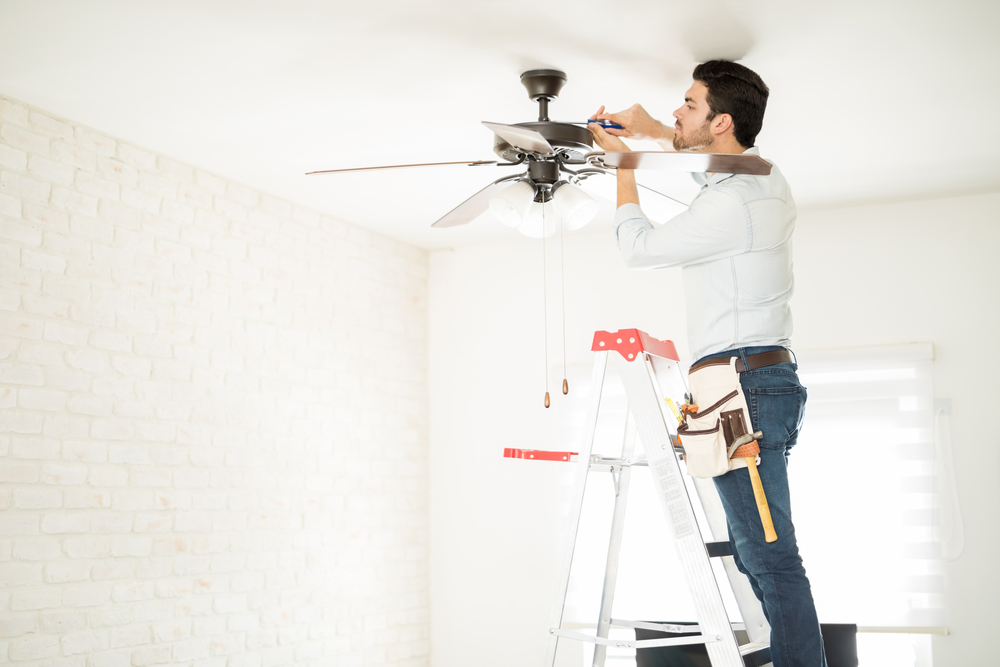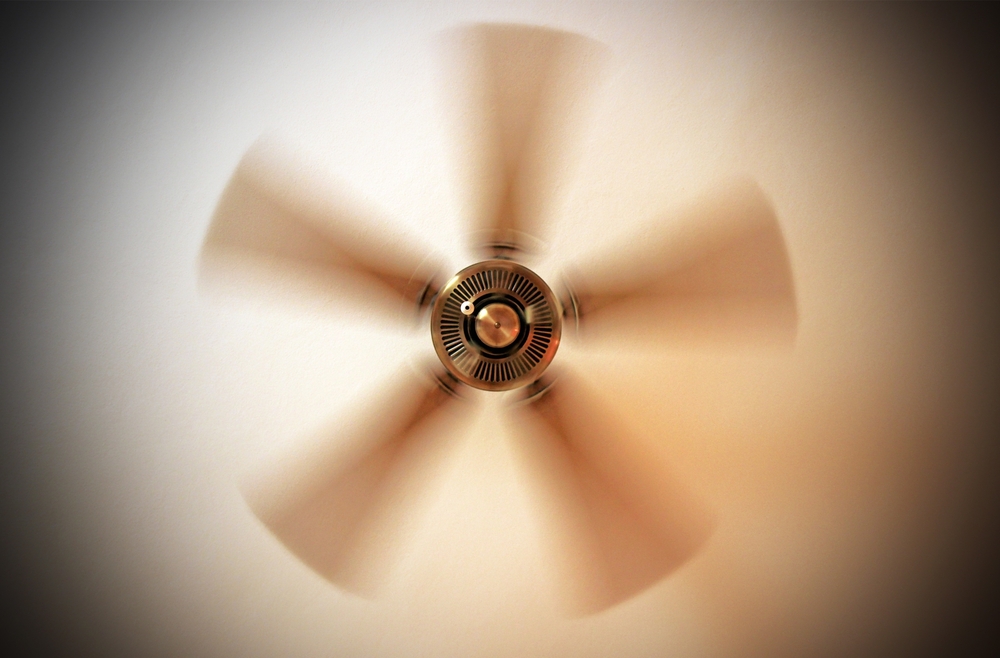Table of Contents
When some appliance in your home stops working as it should — maybe it makes a strange motion or odd noise when it runs, or maybe it doesn’t run at all — you have two options: try to repair it or go straight to replacing it. Repairing a home appliance tends to be the financially savvy option, but there are times when attempts at repairs merely waste time and money and when buying a replacement is the only correct option. So, how do you know when to repair and when to replace? It depends on the appliance, of course.
Maintenance of ceiling fans is often overlooked — or under-looked, given their placement in the home. Ceiling fans can suffer from wear and tear, and after a certain amount of time, they will need to have parts repaired or be wholly replaced. If you are struggling with a malfunctioning ceiling fan in your home, you can use this guide to help you determine which course you should take.
Replace: The Fan Is Older Than 10 Years
The lifespan of a ceiling fan depends on a number of factors, including the maker, the quality of its motor, the reliability of its installation and the frequency of its use. Still, most ceiling fan experts attest that the typical fan will last about a decade, with higher-quality ceiling fans enduring for 15 or 20 years. After the 10-year mark, you might need to be more diligent about fan maintenance, and if a serious issue pops up, it might be more economical to replace your fan rather than try to troubleshoot and repair what could be a lasting problem.
 Repair: The Fan Blades Are Wobbling
Repair: The Fan Blades Are Wobbling
In the vast majority of cases, wobbling fan blades indicate imbalance, which is relatively easy to fix, requiring minimal time — but ample patience. To start, you should turn your fan off and label the fan blades using pieces of painter’s tape numbered one through four. You should tighten the screws of the blade brackets and, using a tape measure, make sure that each blade is the same vertical distance from the same spot on the ceiling. You can gently bend the brackets up or down to achieve this. At this point, you should turn the fan on again to see if the wobbling persists.
If your fan blades continue to wobble, you can invest in a fan blade balancing kit. These kids include different kinds of weights, which you attach to different blades to achieve balance. To start, you should attach the clip to the trailing edge of the fan blade you believe to be the primary problem. You might need to position the clip toward the motor or toward the end; you will need to turn the fan off and on often to test how the weight is affecting the wobble. Once you find a position for the weight that creates balance, you should adhere one of the kit’s weights to the centerline of the blade in line with the clip. You might need to use multiple weights on multiple blades to achieve balance.
Replace: The Entire Fan Rocks Violently Back and Forth
Ceiling fans are made to move as a means of creating better air circulation in a room. Inevitably, their circular motion will generate some forward and backward movement; in fact, some high-quality fans are engineered to permit this movement safely with a special joint that attaches to the ceiling. Yet, if a gentle and subtle rocking becomes more pronounced, regardless of the intensity of the fan’s setting, you might have a dangerous situation. Likely, the fan has been mounted improperly, and it could break free of its ceiling bracket and fall at any moment.
While you could go into the ceiling and increase the security of the fan’s mount, the excessive rocking has likely damaged the fan’s mounting device and possibly the motor as well. It is much safer to start from scratch with a new, properly rated fixture bracket and box and a new ceiling fan.
Repair: The Fan Doesn’t Turn on
There are certainly cases of a fan not turning on as a result of a dead motor, a worn flywheel or broken switches, any of which you might not want to bother repairing unless you are particularly handy. Yet, before you buy a replacement, you might as well test at least one relatively easy fix, just in case.
Improperly installed fans may jostle their wire connections, causing the wires to disconnect and the fan to lose power. You should turn off power to your fan using your circuit breaker and disassemble it to gain access to the wires. Then, you should twist tighter the wire nuts connecting the fan to your home’s electrical system. If the fan tuns on when you reset the circuit breaker, you know that the wiring was the issue. You probably do not need to worry about this issue recurring; if your fan dies again at a later date, it is likely due to another issue.
Conclusion
Even ceiling fans need some maintenance every once in a while. By regularly cleaning and caring for your fans, you should be able to stave off the repair or replace question for some time.


 Repair: The Fan Blades Are Wobbling
Repair: The Fan Blades Are Wobbling





